Increasing Excellence in utilizing X-Ray research and Neutron Scattering Techniques at the University of Tartu (EXANST)
Activities
1. October 2025: Training session at the SPECIES beamline. Soft X-ray emission spectroscopy at the MAX4 synchrotron
Dr. Ivar Kuusik and Dr. Tanel Käämbre participated in the testing and evaluation of the detector at the SPECIES beamline to be used for soft X-ray emission experiments. The training was done in cooperation with the MAX-lab staff and focused on the proper setup and calibration of the detector for X-ray emission measurements.
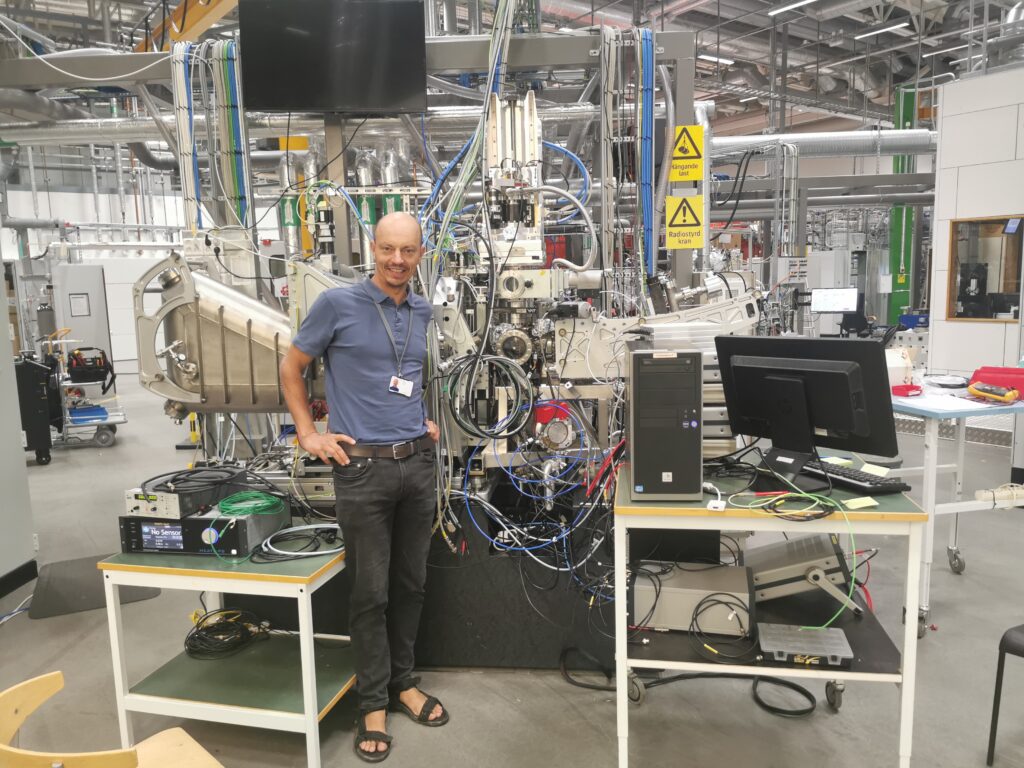
26. September 2025: “Researchers’ Night 2025 “
Institute of Physics, Institute of Chemistry and Institute of Technology at the University of Tartu (UTARTU) organised “Researchers’ Night Festival 2025” on September 26, 2025 at the Maarjamõisa campus, as happened in many other cities in Europe. The aim of the “All-European Researchers’ Night” is to make scientific research more accessible to the public by opening labs and popularising science through attractive experiments. The event program contained science theatre shows, operation and demonstration of research devices, real-time weather monitoring and excursions to the laboratories at the Institute of Physics. Many citizens with children, as well as students and researchers from other institutes, attended. The UTARTU EXANST team was sharing their achievements during the first year of the project with several roll-ups (on the EXANST project, synchrotron radiation, etc.) in the “Physicum” building. Also, some parts of vacuum equipment used in the experiments were demonstrated. During the opened doors time (17.00-20.30), more than 200 participants of various ages visited. The EXANST activities were presented by several project members: N. Krutyak, J.M. Kahk, A. Tõnisoo and M. Kirm. A lot of questions were asked about neutron and X-ray science, our achievements and cooperation with the advanced partners from MAX IV Lab, FZ Jülich and Imperial College.
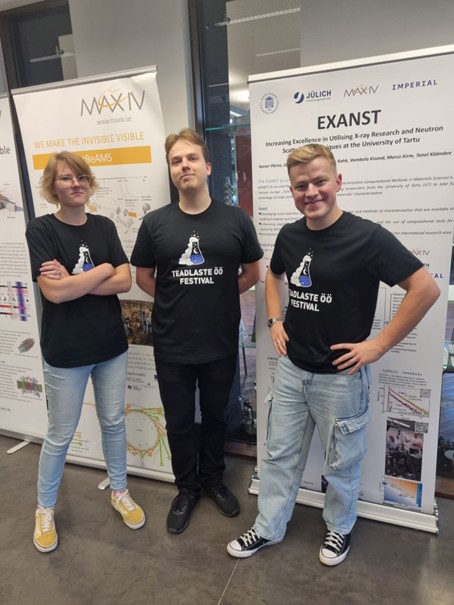
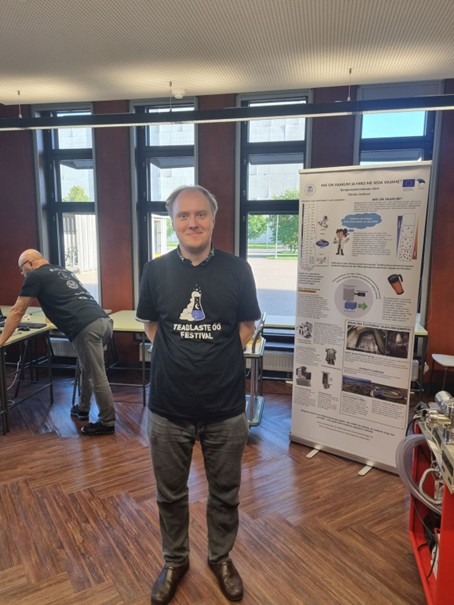
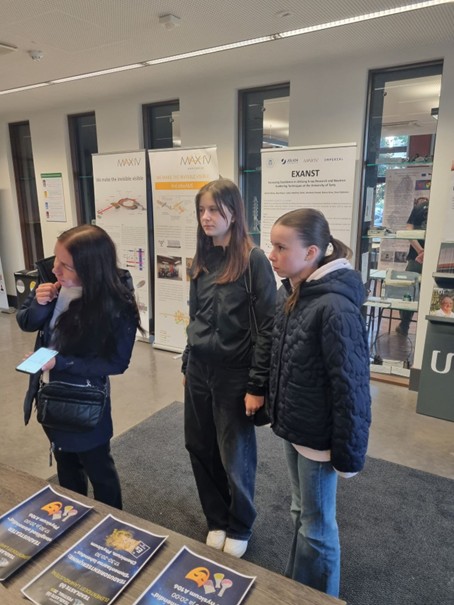
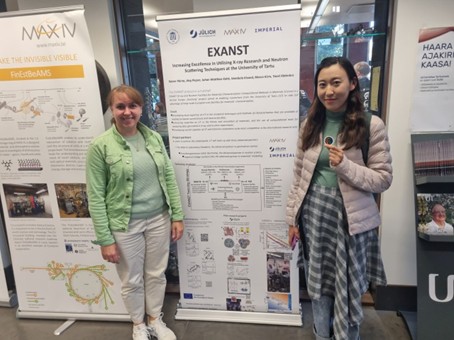
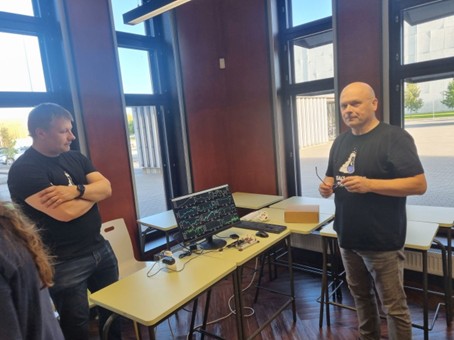
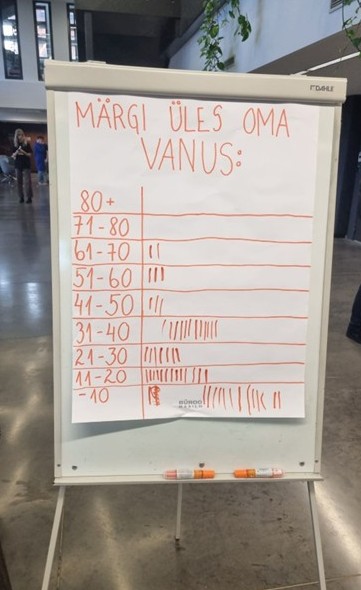
12. September 2025: 1st Materials Modelling Day at UTARTU
A one-day mini-conference called “Materials Modelling Day” took place at the Institute of Physics in Tartu in the framework of the activities of Materials Modelling Centre (MMC), which is one of the cornerstones of the EXANST project. Forty participants took part in this lively event, including eight speakers. Invited speakers from Imperial College London (EXANST advanced partner) Prof. Johannes Lischner and Prof. Alexei Kornyshev presented talks entitled “Modelling hot carriers in metallic nanoparticles: from creation to catalysis“ and „Unravelling hidden abilities of the most important molecule of life“, respectively. Invited speaker Dr. Alexei Kuzmin from the University of Latvia gave a talk on using of advanced EXAFS tools to explore local atomic environments. The programme also included presentations by representatives from University of Tartu (Prof. Uko Maran, Dr. Maksym Golub, Dr. Artur Tamm, Prof. Veronika Zadin and Dr. Juhan Matthias Kahk), who discussed machine learning, simulations and modelling in various areas of materials science. After the talks, projects of bachelor’s, master’s and doctoral theses related to materials and molecular computer simulations were presented in the poster session. The EC project NEPHEWS poster (presented by a Estonian ESUO delegate Marco Kirm) highlighted the support offered to synchrotron and neutron radiation in Europe and in Estonia one of the countries targeted by the above mentioned project. The first “Materials Modelling Day” brought together researchers from different Institutes working on theoretical calculations and modelling of materials properties as well experimentalist using X-rays and neutrons in studies of advance materials. This is one of the goals of the EXANST project increase such interactions. Participants appreciated the quality of the organised event.

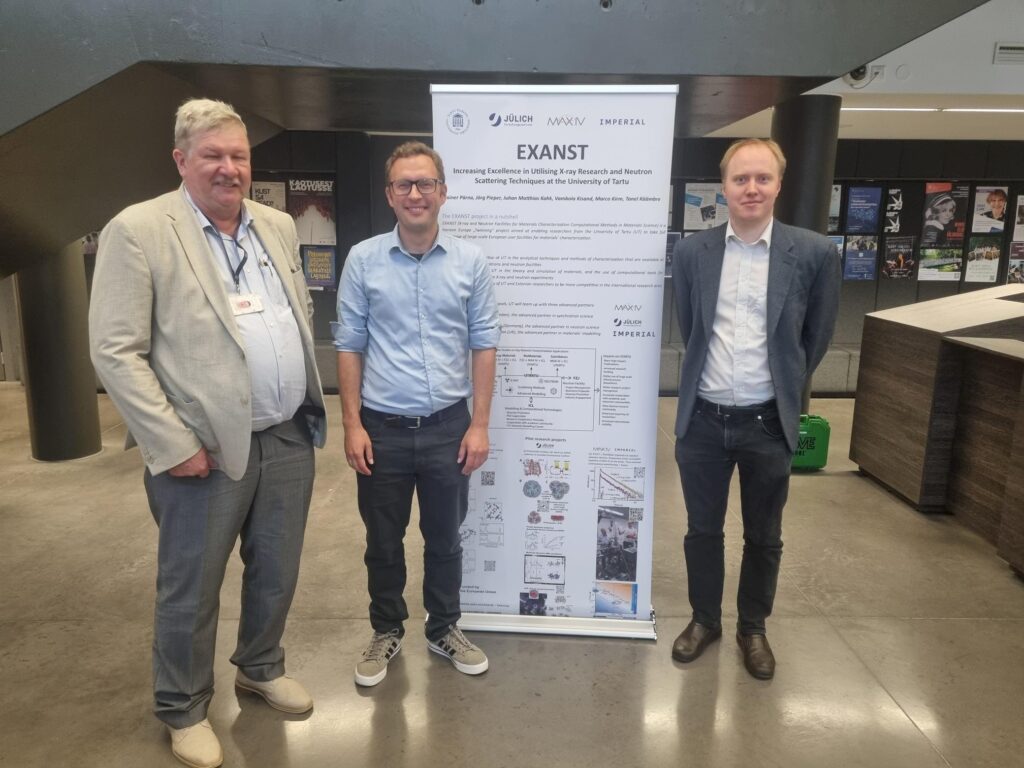
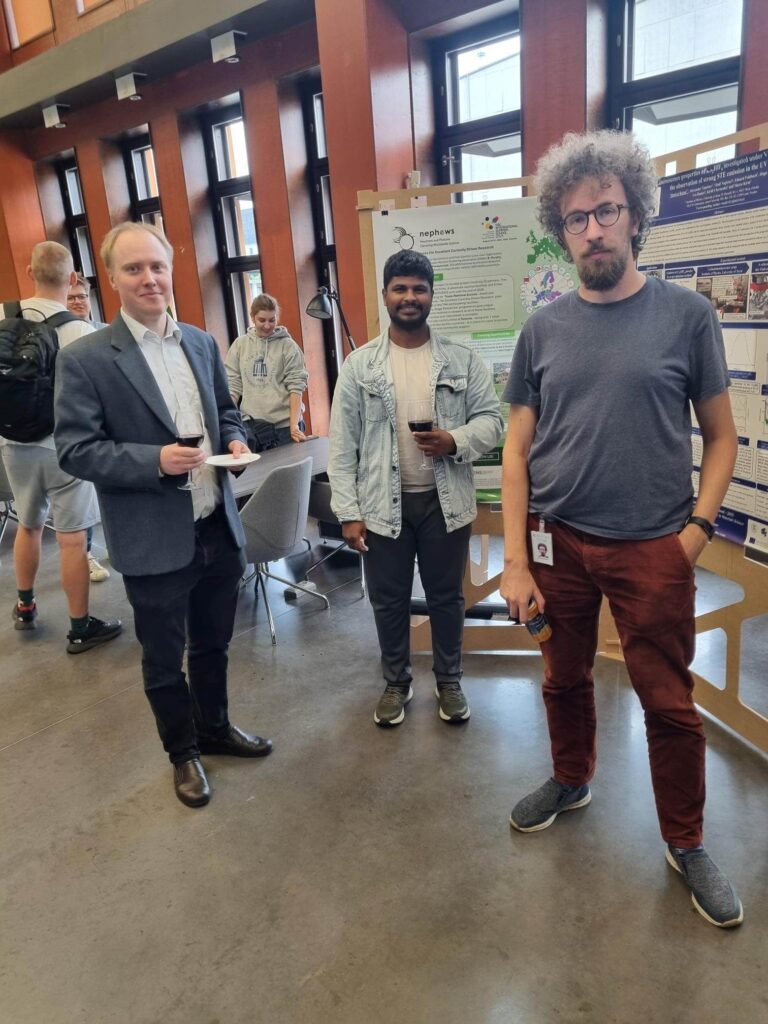
24-31 August 2025: RÅC International Summer School, Tallinn, Estonia
The RÅC (Röntgen-Ångström-Cluster) International Summer School with focal theme „Diffraction and Spectroscopy in Materials Science“ was held at the Hestia Europa Hotel in Tallinn during the last week of summer. RÅC 2025 (https://www.rac-school.org/rac2025/) was organized by Deutsches Elektronen-Synchrotron (DESY), Swedish Research Council and the University of Tartu through EC TWINNING project “EXANST”. The school was attended by 56 students (9 masters, 39 PhDs and 8 postdocs) from 12 European countries, as well as 21 lecturers. All participants were very happy with the organization of summer school.
Programme structure, lectures and topics of the RÅC International Summer School are designed to improve the fundamental understanding in advanced materials design. This will enable young researchers to tackle today’s and tomorrow’s challenges and key barriers in materials science more effectively. The school emphasized interactions and discussions among the participants and lecturers by providing a stimulating and enjoyable environment. Prof. Jörg Pieper (University of Tartu) gave a talk on topic “Structure and dynamics of biomolecules studied by (in situ and time-resolved) neutron scattering experiments”. The participants enjoyed a half-day trip to Lahemaa National Park in brilliant sunshine demonstrating the best of Estonian nature and other sightseeing.
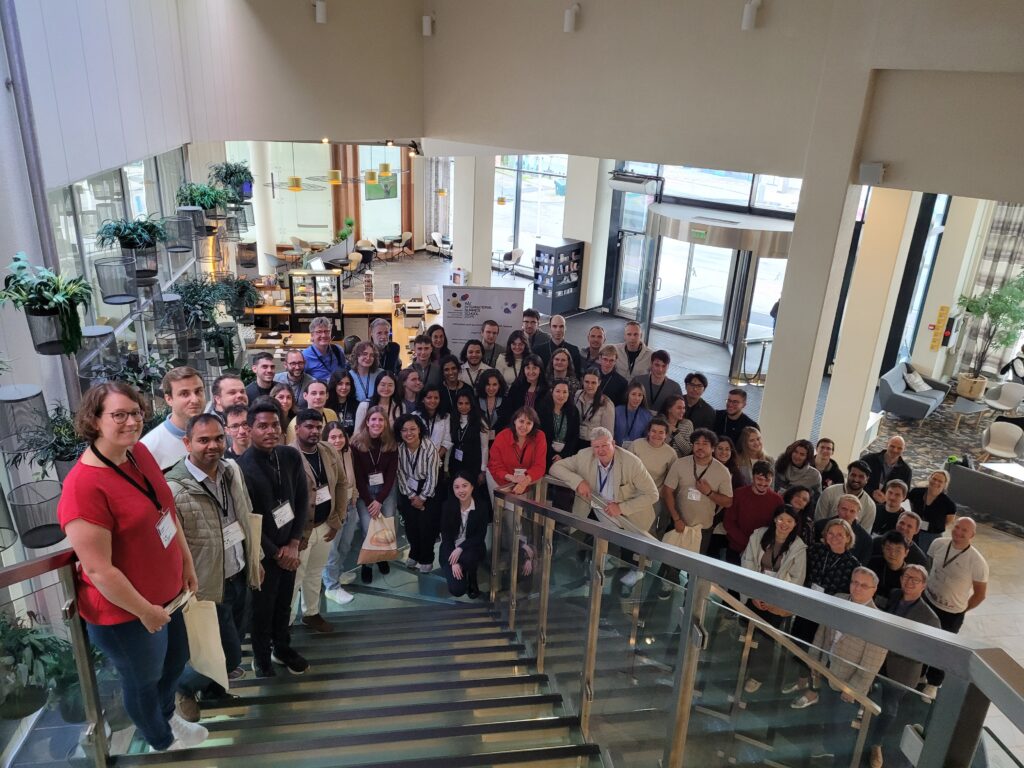
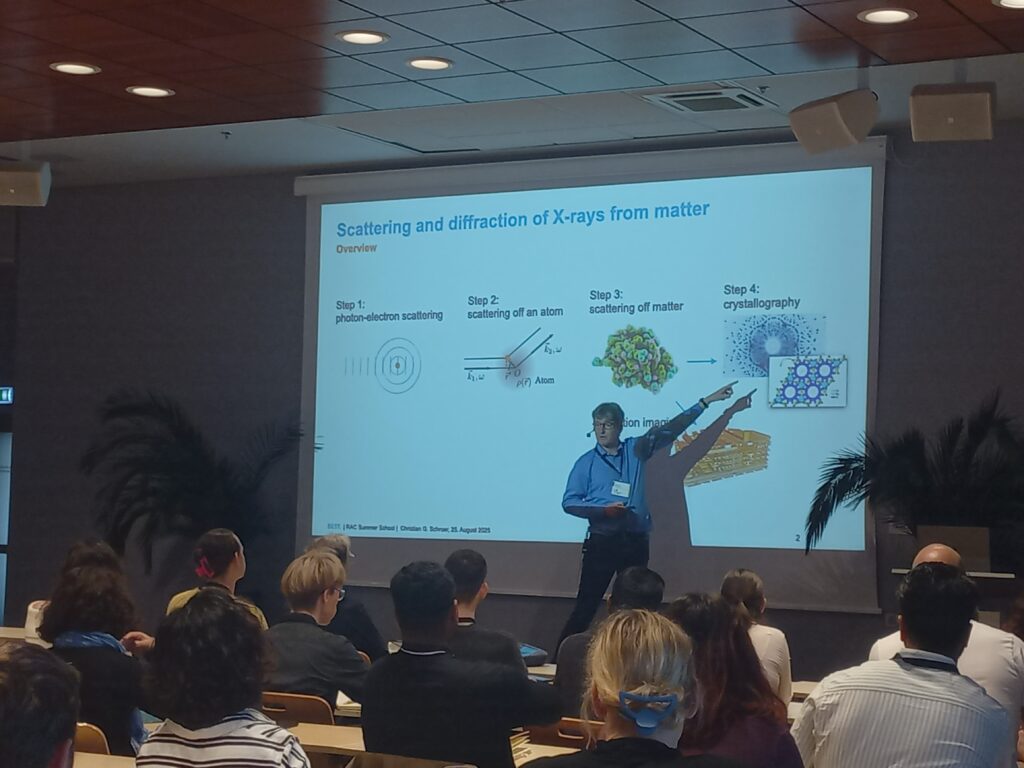
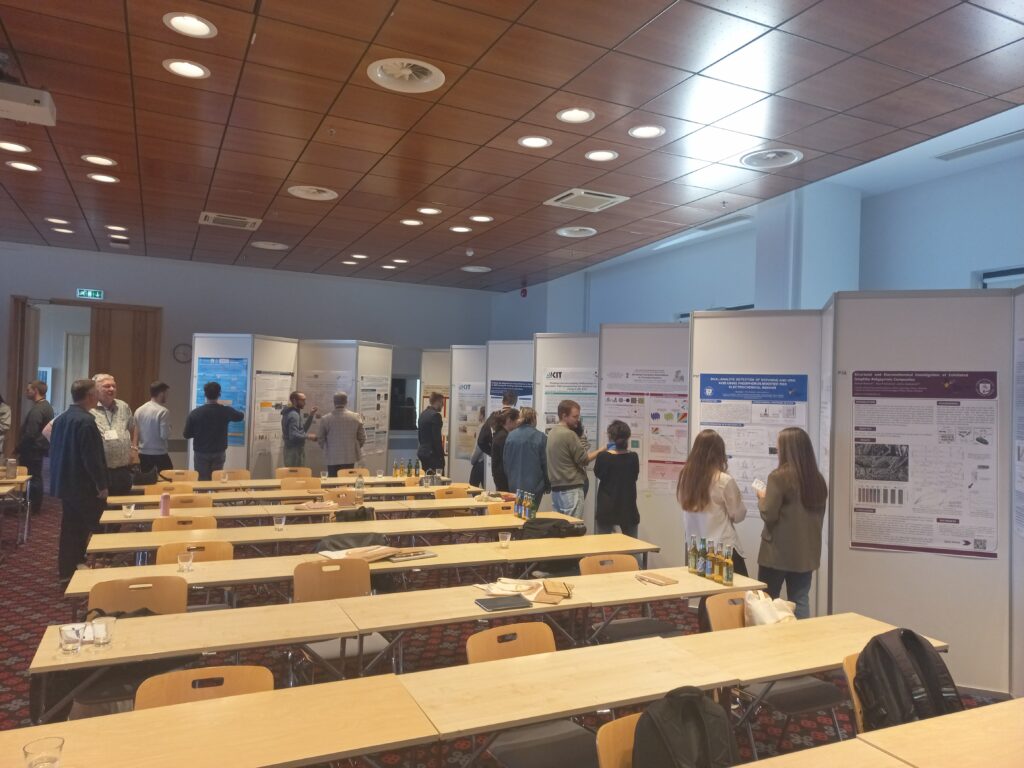
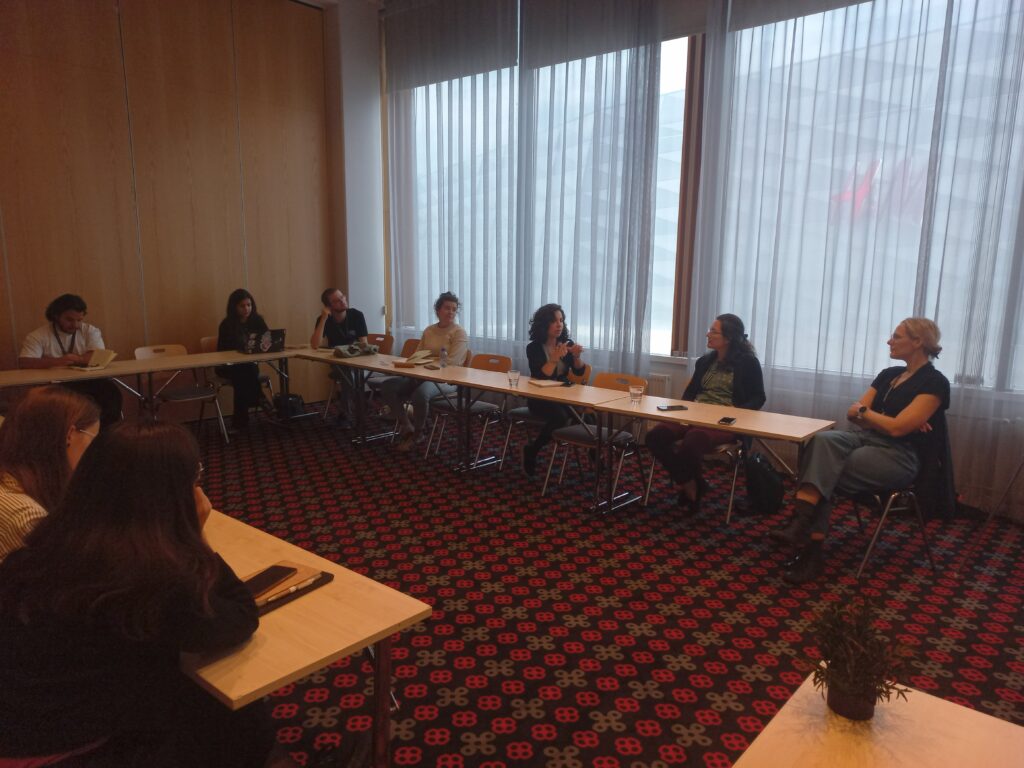
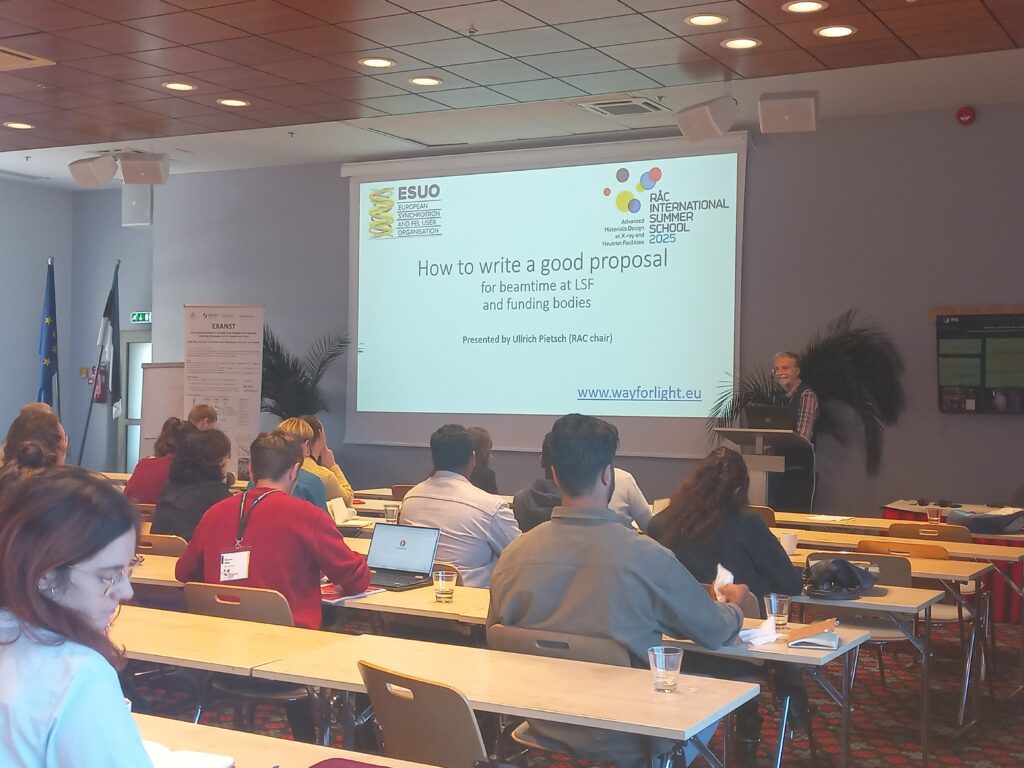
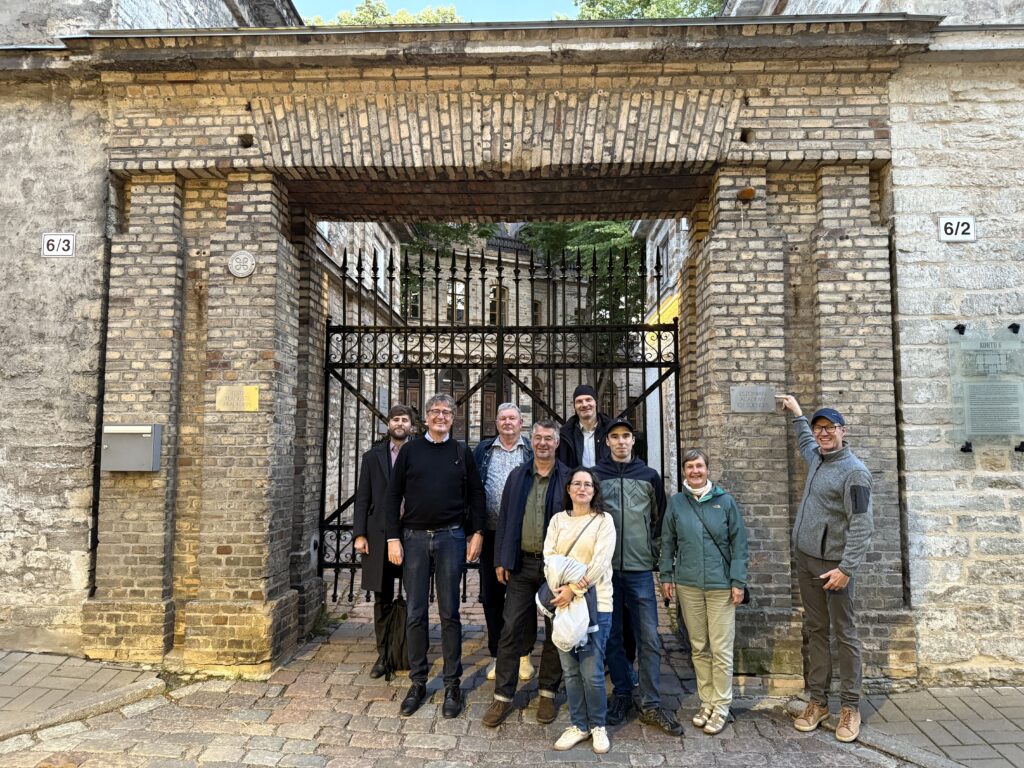
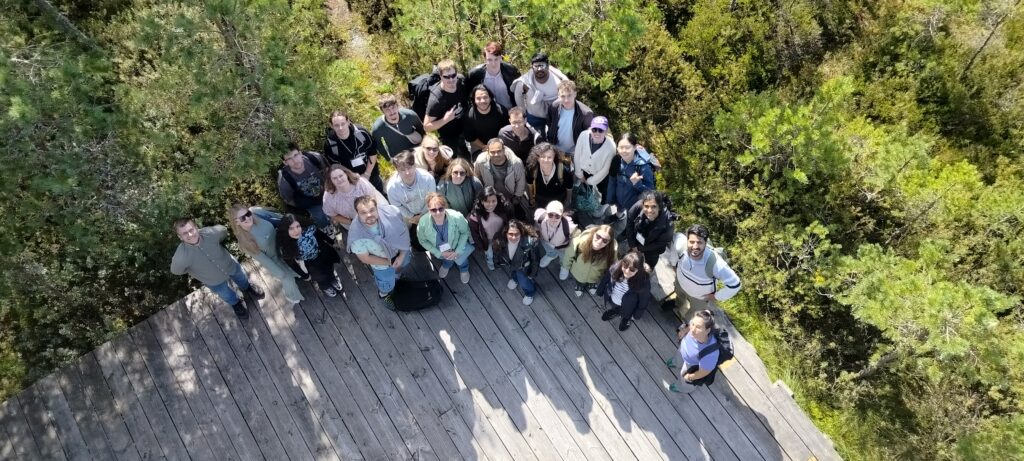

25. August - 01. September 2025: A New Sustainable Energy Research setup in operation at FinEstBeAMS
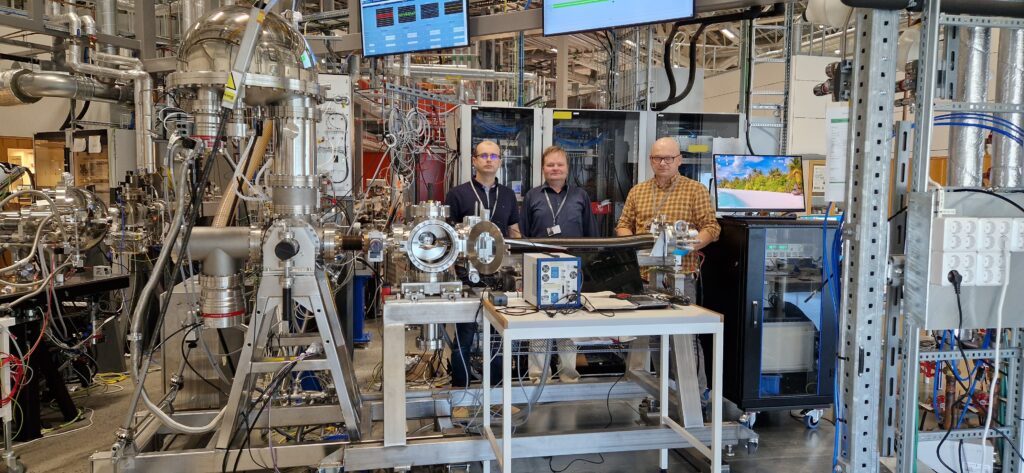
Researchers Rainer Pärna, Arvo Tõnisoo and Jaanus Kruusma at the FinEstBeAMS GPE endstation with the connected new SER setup ready for research. Photo by Antti Kivimäki.
Researchers Rainer Pärna and Arvo Tõnisoo from the Institute of Physics and Jaanus Kruusma from the Institute of Chemistry of the University of Tartu had a beamtime at the FinEstBeAMS beamline in MAX IV laboratory between 25.08.25 and 01.09.25. At the beginning of the beamtime the new Sustainable Energy Research (SER) setup was connected to FinEstBeAMS gas phase endstation (GPE). The SER was tested investigating the electrochemical stability of the 1-ethyl-3-methylimidazolium tetrafluoroborate room temperature ionic liquid (RTIL) at T = 100 °C and electrochemically polarized micro-mesoporous molybdenum carbide derived carbon [MMP-C(Mo2C)] electrode (i.e. support). This test was followed by investigations of the electrochemical stability and adsorption behavior of 1-octy-3-methylimidazolium tetrafluoroborate RTIL at T = 30, 45, 60 and 100 °C and electrochemically polarized MMP-C(Mo2C) electrode. During these experiments core level electron binding energies of the RTIL elements at various working electrode (used as the support) potentials were measured using low-energy (“soft”) X-ray photoelectron spectroscopy. This will enable us to characterize the RTIL adsorption strength at the selected MMP-C(Mo2C) electrode potentials and give some more information about the changes in the electrochemical double layer structure at higher temperatures.
This research visit fulfilled goals of the EU TWINNING project EXANST Pilot Research Topic 1: Energy materials studied by X-rays, neutrons and modeling at MAX IV and WP5 Pilot Research Combining X-Ray and Neutron Techniques to Analyse Smart Materials (UTARTU) and conclude tasks T5.2.1 – T5.2.4.
8. May 2025: Insights from Jülich Centre for Neutron Science (JCNS), FZ Jülich
Meeting about the mapping of Baltics regional industry R&D interests.
Another discussion on the challenges of industry-science cooperation mapping across the Baltic states took place at ZOOM with representatives of the Jülich Centre for Neutron Science (JCNS). Dr. Thomas Gutberlet and Dr. Eric Mauerhofer outlined the state of industry involvement in the use of large-scale neutron and synchrotron facilities in Germany, shared their experiences and gave practical recommendations for academic-industry collaboration. The best approach is too have long term R&D cooperation between industry and academic/research institutes.As a result, highlights and key takeaways for the Baltic context (taking into account the capacities and needs of small companies) were formulated in the framework of the EXANST project strategy.
Participants: Marco Kirm, Nataliya Krutyak, Eric Mauerhofer, Ott Rebane, Thomas Gutberlet and Jörg Pieper
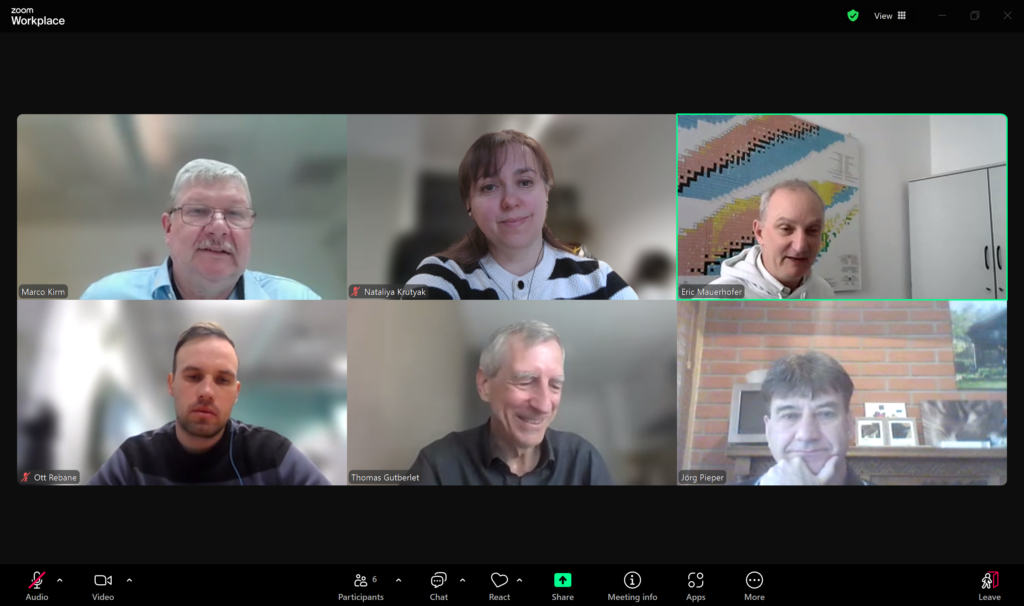
8. April 2025: an industrial relations meeting (about the mapping of Baltics regional industry R&D interests)
A fruitful discussion about industry-academia cooperation, along with its challenges, took place in ZOOM with the Head of the Industrial Relations Office at MAX-IV. Dr. Magnus Larsson shared his experience in engaging industrial partners to collaborate with scientific research, providing practical information about existing platforms and facilities at MAX IV and more widely in Sweden. Valuable advice was provided how to organize cooperation with industry and what are important features for the mapping process.
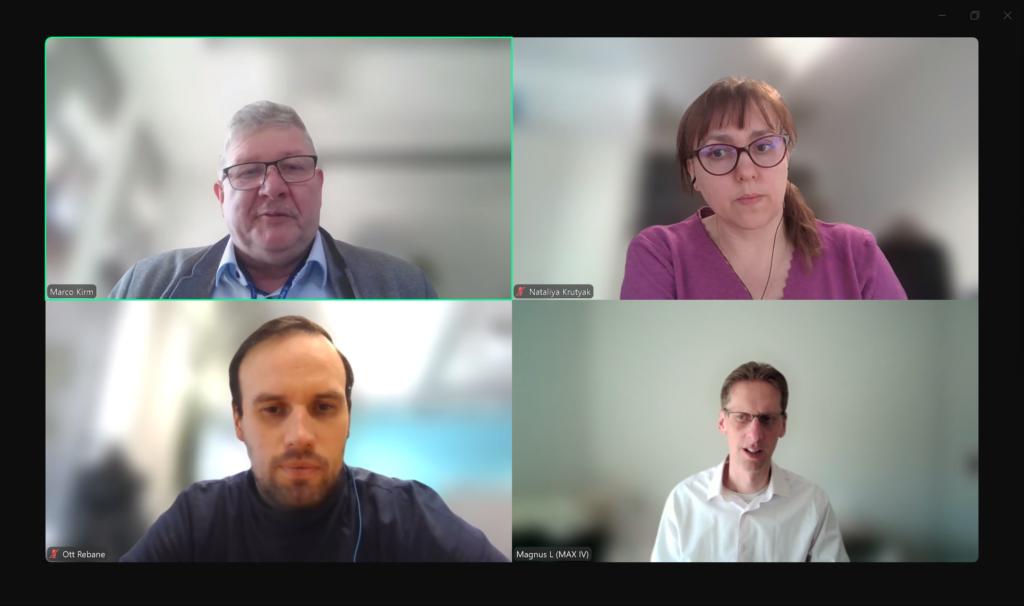
31. March – 4. April, 2025: TR-SAXS experiment
The photoactive orange carotenoid protein (OCP) is a nanoscale high-light sensor and protects the photosynthetic apparatus of many cyanobacteria against photodamage. Upon illumination, OCP samples a number of conformational sustates to eventually adopt ist active state structure followed by a backtransformation to the dark-adapted state. However, many aspects of the latter “photocycle” still have to be deciphered. Teaming up with Martin Dulle and Andreas Stadler from FZJ in Jülich, Germany, we interfaced thesmall angle x-ray scattering (SAXS) instrument Ganesha with a setup for blue-light illumination to perform time-resolved SAXS experiment. This experiment will allow us to unravel the time scales of the individual photocycle processes as well as to determine the solution structures of intermediate photocycle states
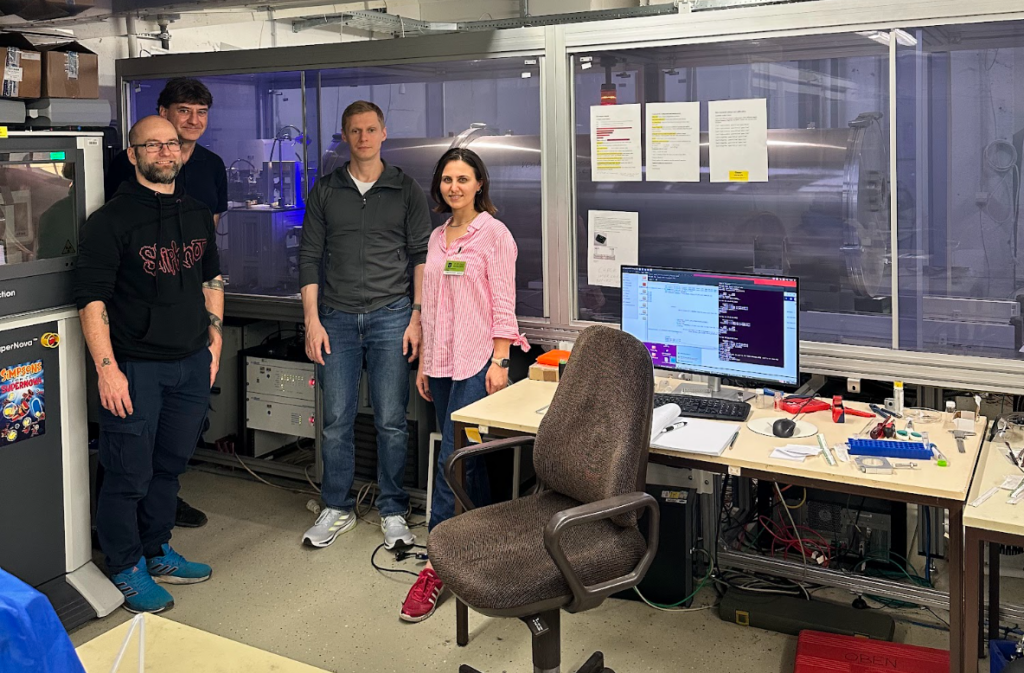
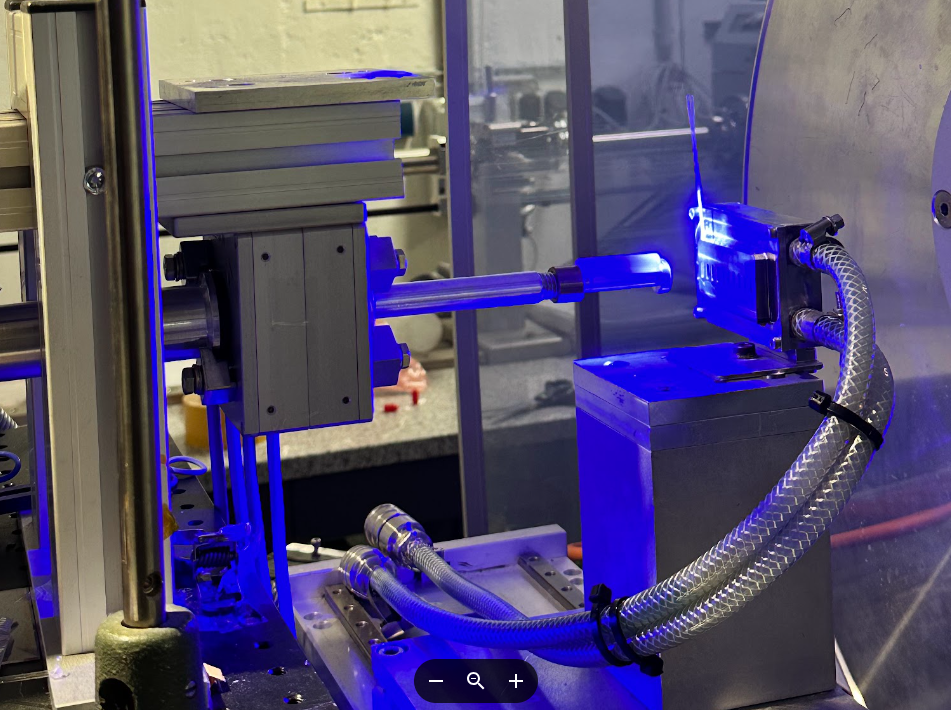
September 2024 – February 2025: Test molecular dynamics simulation and proposal for Supercomputer Access
Starting from September 2024, we had the exciting opportunity to run test molecular dynamics simulations on the JURECA supercomputer at FZJ in Jülich, Germany, teaming up with Andreas Stadler, Jan Meinke, and Godehard Sutmann from FZJ to explore the dynamical behavior of the Orange Carotenoid Protein—a molecule that plays a key role in how cyanobacteria protect themselves from excess solar radiation.
Using cutting-edge molecular dynamics simulations, we looked at the protein in incredible detail, down to motions of individual parts at atomic scale. Our goal is to bring together computer simulations and real-world experiments, like neutron scattering.
This test run was essential in preparing a proposal for a full-scale, long-term project. We submitted the proposal in February 2024 to the Jülich Supercomputing Center, which provides some of the fastest computers in the world to help scientists tackle big, complex questions—like ours.
17. February 2025: Beamtime proposal writing training by MAX-IV Lab experts in ZOOM
Together with the MAX IV Lab a beamtime proposal writing training was organised in ZOOM. Dr. Andrey Shavorskiy carefully explained challenges in writing of successful proposal for synchrotron radiation research. Well selected exampled illustrated how to explain the research idea in a way that it will be selected. 18 participants, including early stage researchers, were attending from different Estonian Universities.
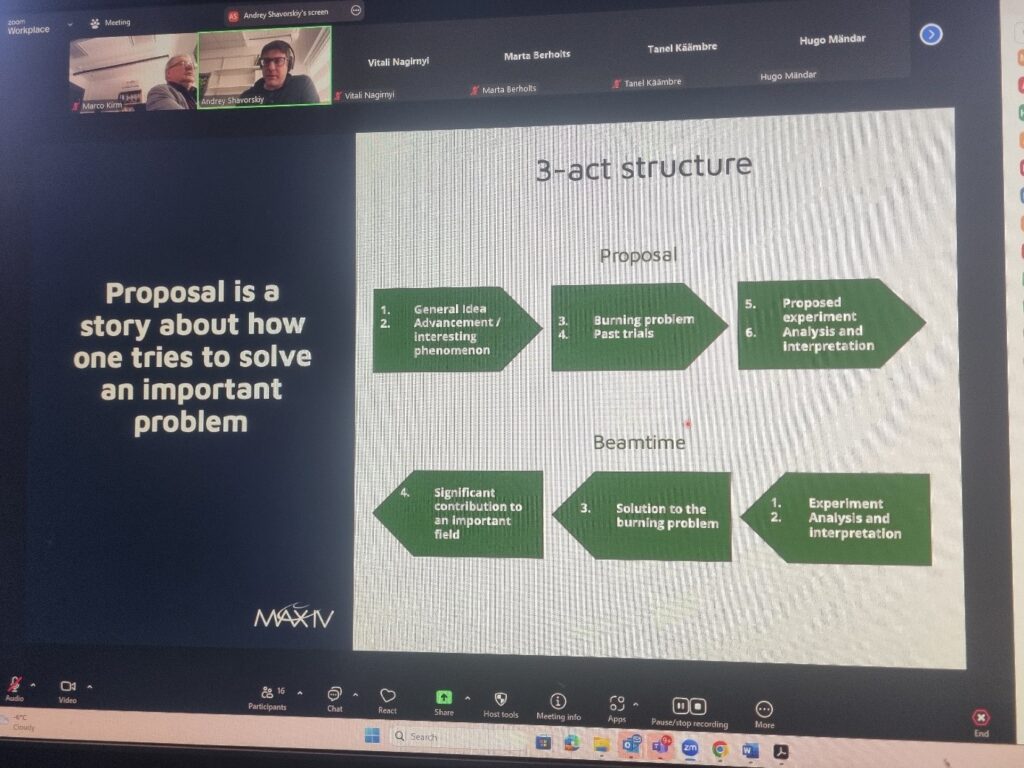
14. February 2025: Series of seminars of computer simulations on modelling materials properties was launched
(3 ECTS for students at UTARTU).
After a preparation phase computer simulations on modelling materials properties seminar series was launched together by Institute of Physics, Institute of Chemistry and Institute of Technology of Tartu University and with a significant contribution of our partner Imperial College UK.

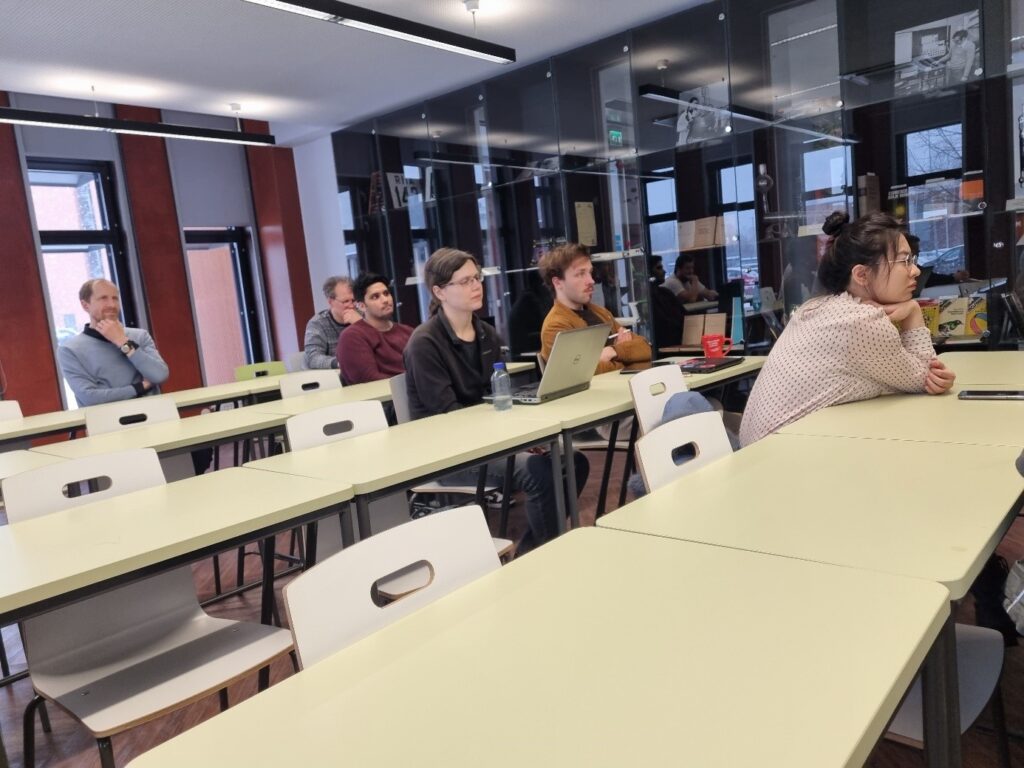
28.-31. January 2025: sTARTUp Day 2025 – Estonia’s Top Startup Event and biggest in Baltics
sTARTUp Day is bringing together 3500+ startup-minded people to celebrate entrepreneurship in the smart city of Tartu.
The StartUp days held in Tartu, Estonia is one of the largest events in the Baltic countries, which has an international reach and annually brings together representatives of start-up companies, research organizations and investors to exchange experiences, ideas and profitable investments. The meetings were held with diferent entrepreneurs, technology developers and potential investors. EXANST was a part of UTartu technology exposition in its demo-space by introducing potential of experimental (MAX IV Lab, Sweden and FZ Jülich, Germany) and theoretical (Imperial College UK) reserach methods.
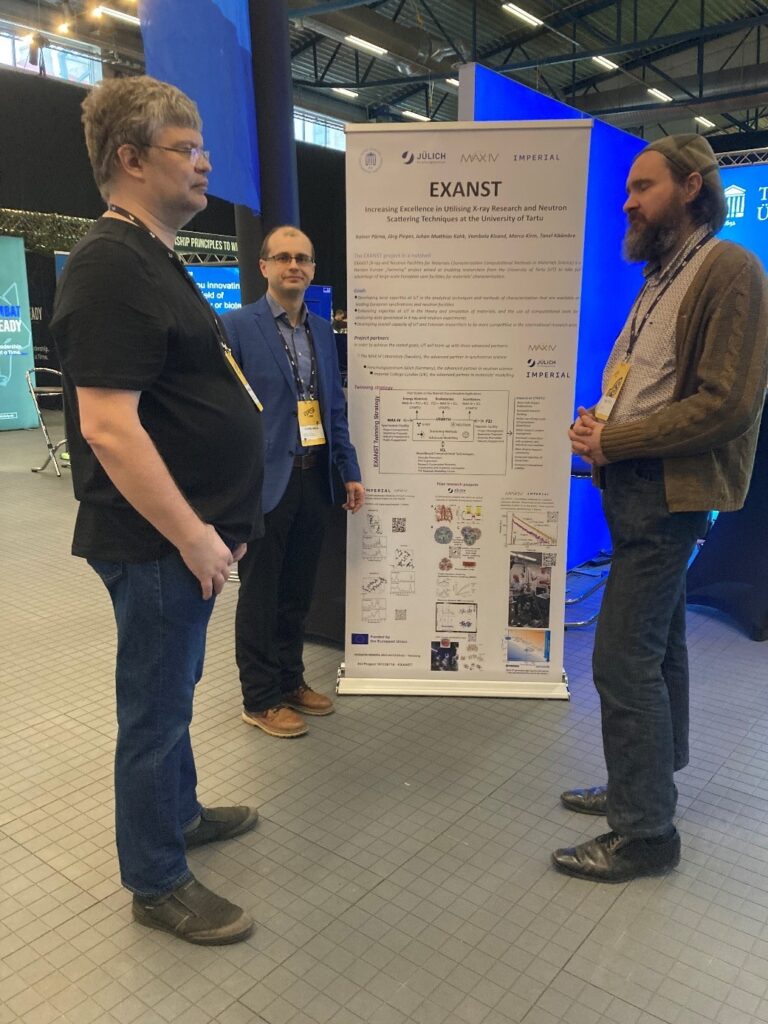
13.-15. January 2025: 36th MAX IV Users meeting
The 36th User Meeting took place 13-15 January, with nearly 400 participants gathering at the Scandic Star hotel in Lund. It was an engaging event to network and listen to inspiring presentations for beamline users, researchers, collaborators, and students, as well as opportunities to speak with meeting sponsors and instrument vendors. Marta Berholts, Rainer Pärna and Marco Kirm communicated EXANST goals during poster sessioon and informal meetings during the conference. Also the EXANST progress was discussed with MAX IV reprsentatives.
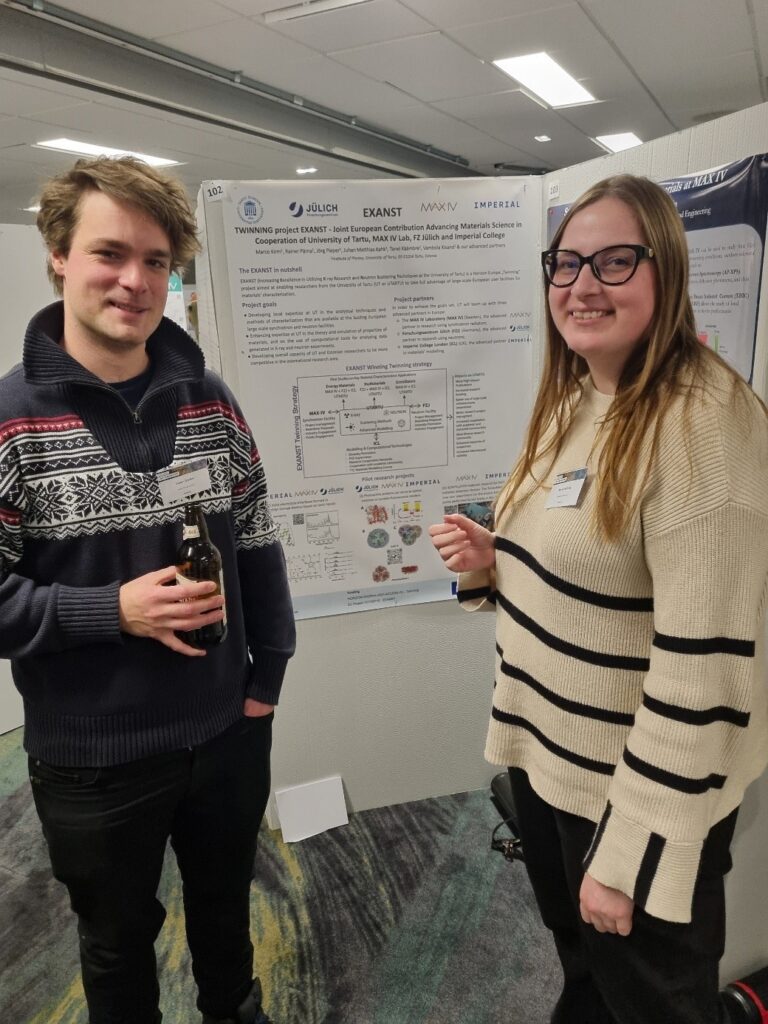
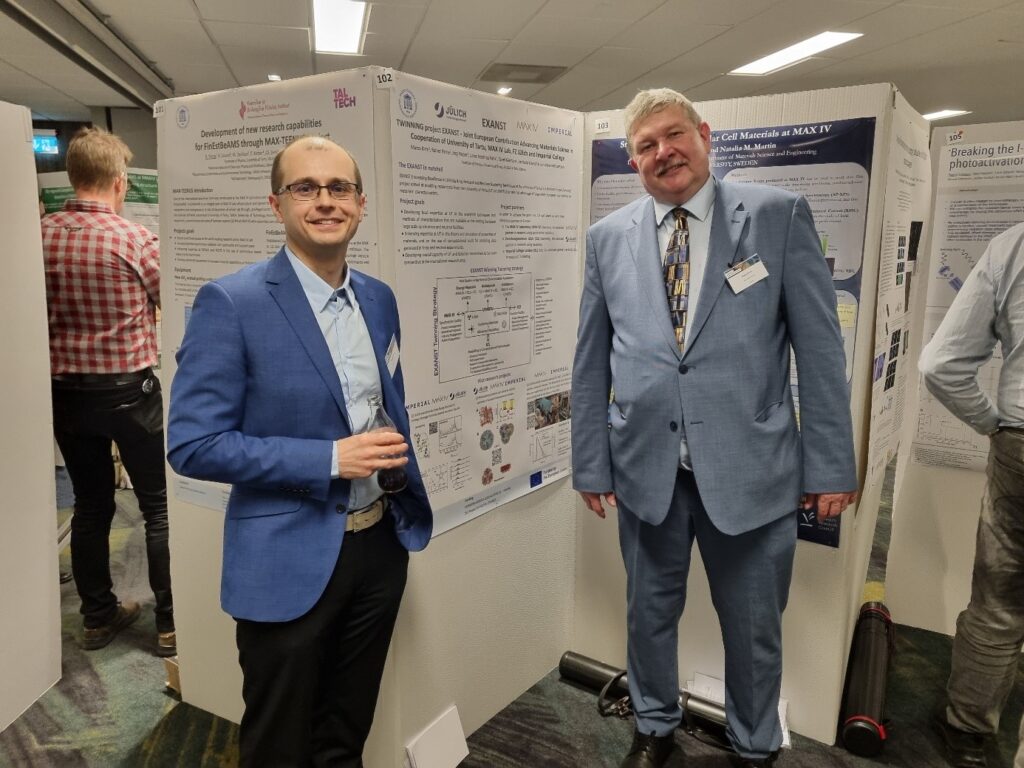
27.11 – 02.12 2024: Training at FLEXPES beamline
Dr. Jaanus Kruusma, Dr. Rainer Pärna and Dr. Tanel Käämbre participated in the successful testing and evaluation of the operando electrochemical cell measurement setup at the FLEXPES beamline to be used for determining the polarisation behaviour of a variety of ionic liquids at supercapacitor electrodes. Measuring the actual polarisation behaviour in realistic conditions gives additional detail and more solid foundation to design optimal supercapacitors, including the choice of electrolyte and electrode materials to achieve sustainable operation.
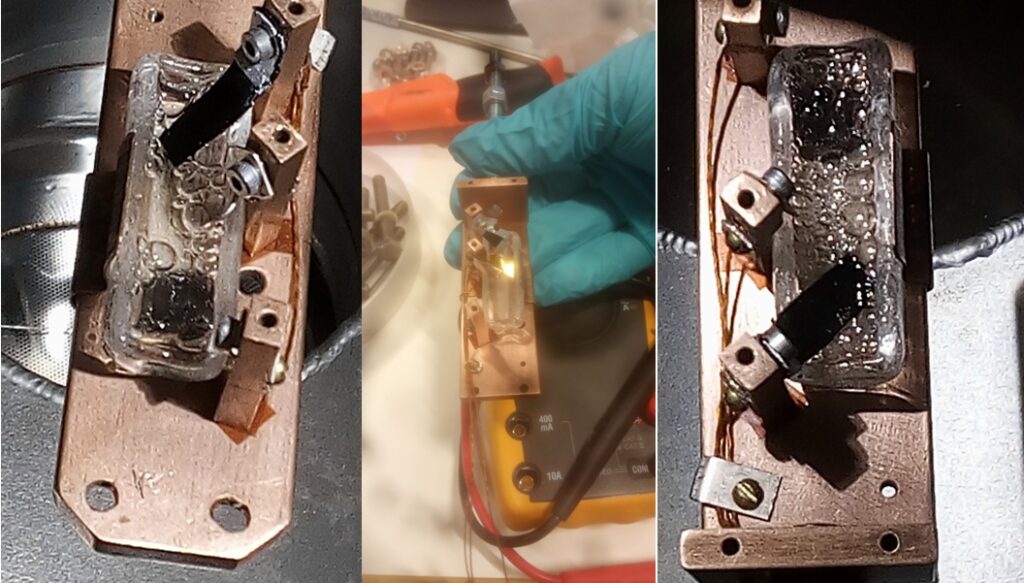
18-21 November 2024: Theory XFEL workshop
The workshop in Marseille, France touched various topics related to predictive theories around XFEL interactions with matter. Our project presented novel modelling capabilities with an invited talk by Artur Tamm. This helps to promote developed tools to other groups as well as discover possible limitations and further improvement directions.
11.-17. November 2024: Experimental testing of the luminescence setup for studies of
ultrafast processes at FemtoMAX beamiline at MAX-IV Lab
During this week the characterization of the luminescence setup for studies of ultrafast processes at FemtoMAX beamiline was performed. The setup was developed together with FemtoMAX team as foreseen in the EXANST project plan. The expected time resolution 30 ps was achieved with MCP-PMT detector. It means that experiment is ready to accept new users from scintillation community and our Tartu team can start the planned research of ultrafast scintillators according to EXANST pilot projects.
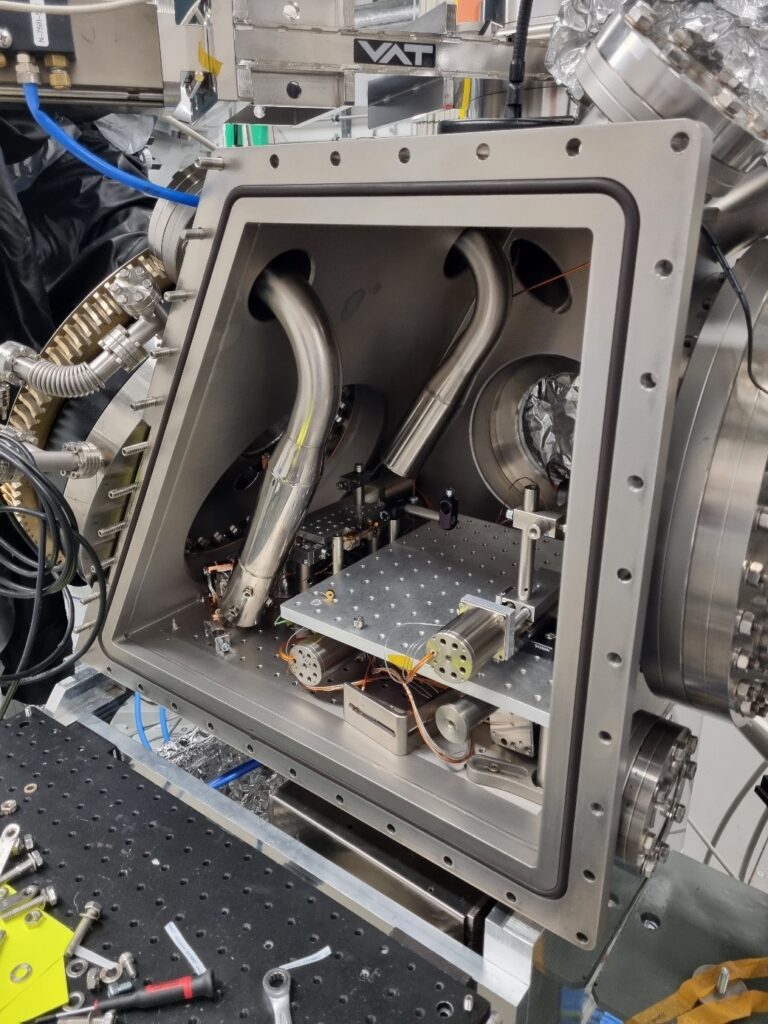
23–29 October 2024: Training at FLEXPES beamline
Dr. Tanel Käämbre, in collaboration with Dr. Maxim Tchaplyguine from MAX IV Laboratory (on the photo), participated in the successful testing and application of the free (metal/compound) cluster source setup at the FLEXPES beamline to investigate e.g. the evolution of metal hydride clusters under varied initiation conditions. Metal hydrides have a potentially large capacity of hydrogen containment and controlled release (on par with highly compressed gas containers with accordingly wide spectrum of hazards). The obtained experience operating such cluster source is very valuable for future research projects to be carried out by Tartu University teams.
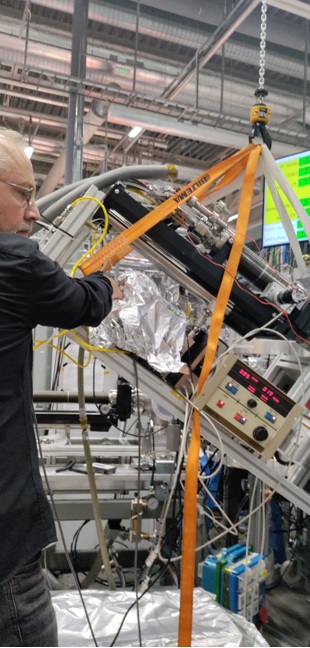
13.-19. October 2024: 12th International Conference “Photosynthesis and Hydrogen Energy Research for Sustainability” in Istanbul, Turkey
The conference is a well-established international forum for researchers and students engaged in research related to photosynthesis and (bio)hydrogen production with about 100 participants. The topics discussed include the fundamental processes of photosynthesis and the practical production of (bio)hydrogen. Special attention is payed to the structural organization of photosynthetic reaction centers, the structure and function of other photosystems, artificial photosynthesis, and hydrogen production mechanisms.
At this event, Prof. Jörg Pieper gave a talk about the application of neutron scattering methods under in-situ illumination to study structure and dynamics of photosystems, which is an essential part of the EXANST pilot research program. He also introduced the EXANST project as an important means for further method development.
06.-09. October 2024: International Conference FMNT 2024
International conference ‘Functional Materials and NanoTechnologies + Nanotechnology and Innovation in the Baltic Sea region‘ (FM&NT-NIBS 2024) was held at the V-Spa conference centre in Tartu, Estonia in October, 6 – 9, 2024. The EXANST project was introduced by a talk given by M.Kirm and roll-up presentation by R. Pärna. Several participants of EXANST project were at the conference. The scope of FM&NT-NIBS 2024 conference covers experimental and theoretical research on functional materials, nanotechnology, optical materials, novel characterisation methods, low dimensional systems and green and sustainable energy technologies and environment, bioengineering materials, biotechnologies and health, and yet more. FM&NT-NIBS 2024 provides an ideal academic platform for researchers to present their latest research findings and describe emerging technologies and directions in Functional Materials, Nanotechnologies, and Innovation issues.
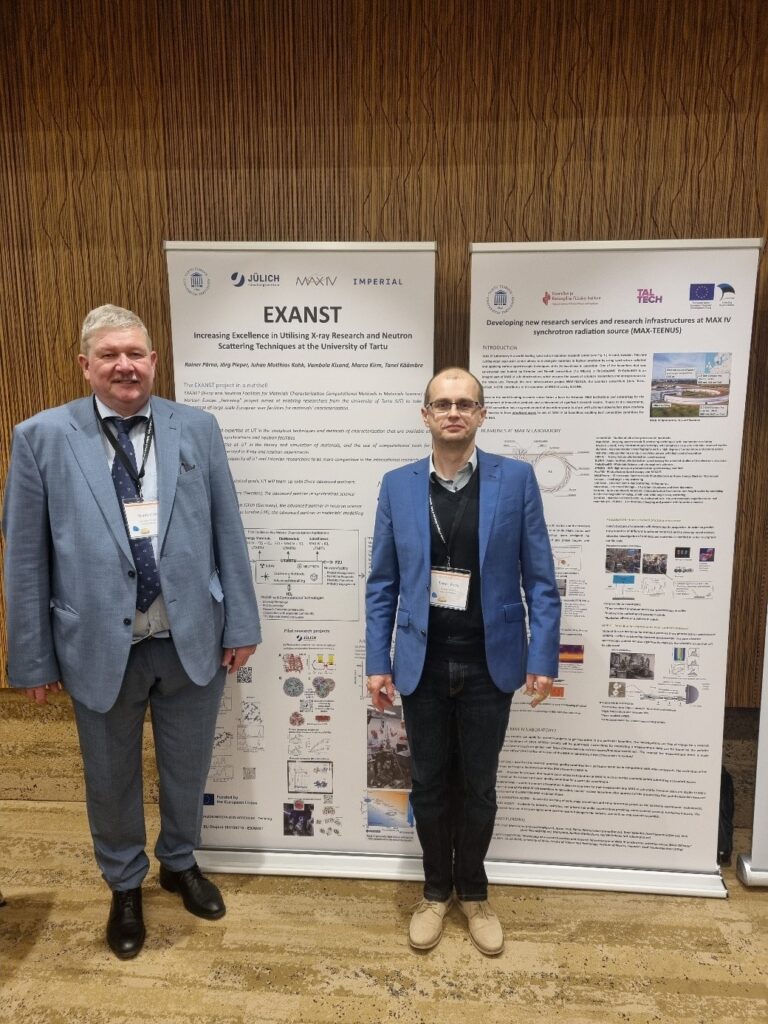
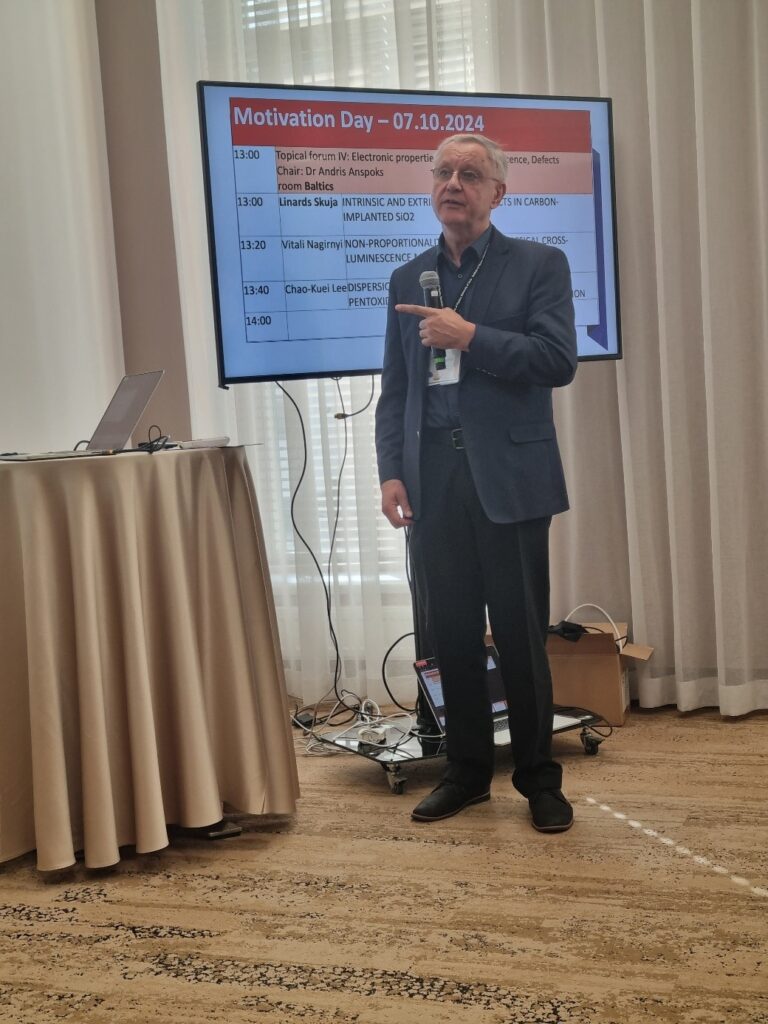
27. September 2024: “European Researchers Night 2024 “
The University of Tartu organized “The Night of scientists” 27 September 2024 in the frame of “European Researchers Night 2024 “. The activities of this event were also located at the Institute of Physics and Institute of Chemistry. The aim of the event was to attract more interest of general public to material science and education. The program of the event included, particularly, demonstration experiments, quests and excursions to the laboratories. The event attracted attention both general public and university students and researchers. The EXANST was presented with roll-ups (EXANST project, MAX IV Lab ) in “Physicum” (the building of Institute of Physics, UTARTU) with more than 300 participants. Also several project members (R.Pärna, J.M. Kahk, V. Kisand, M. Kirm, T. Käämbre) were present explaining the nature of EXANST.
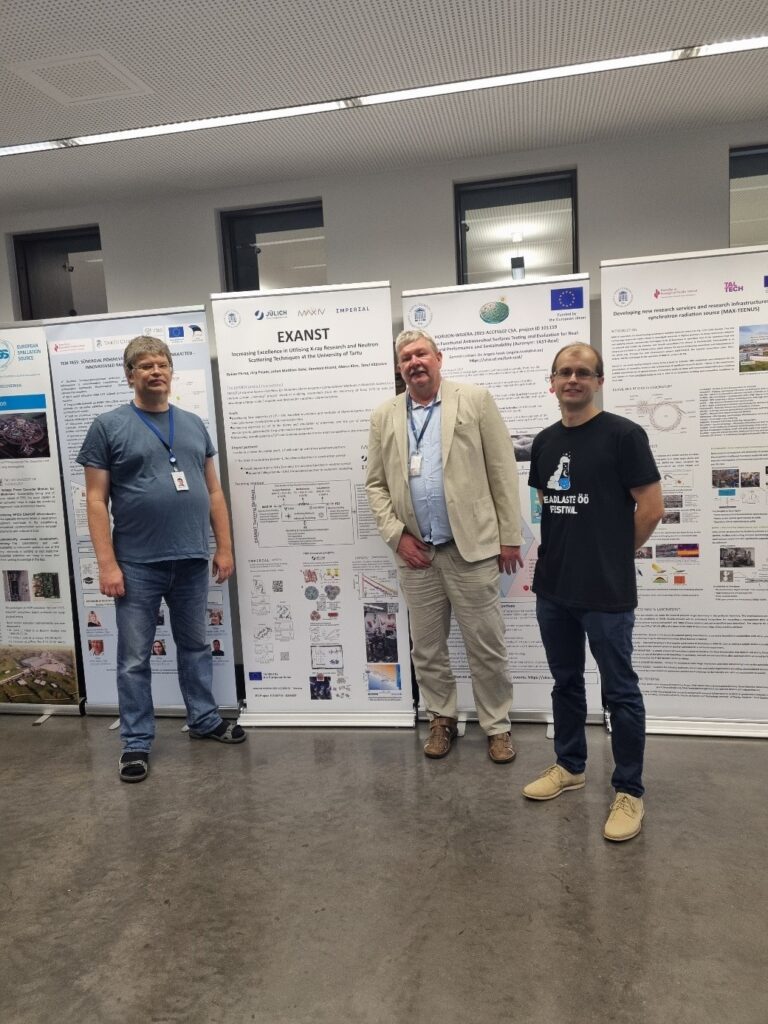
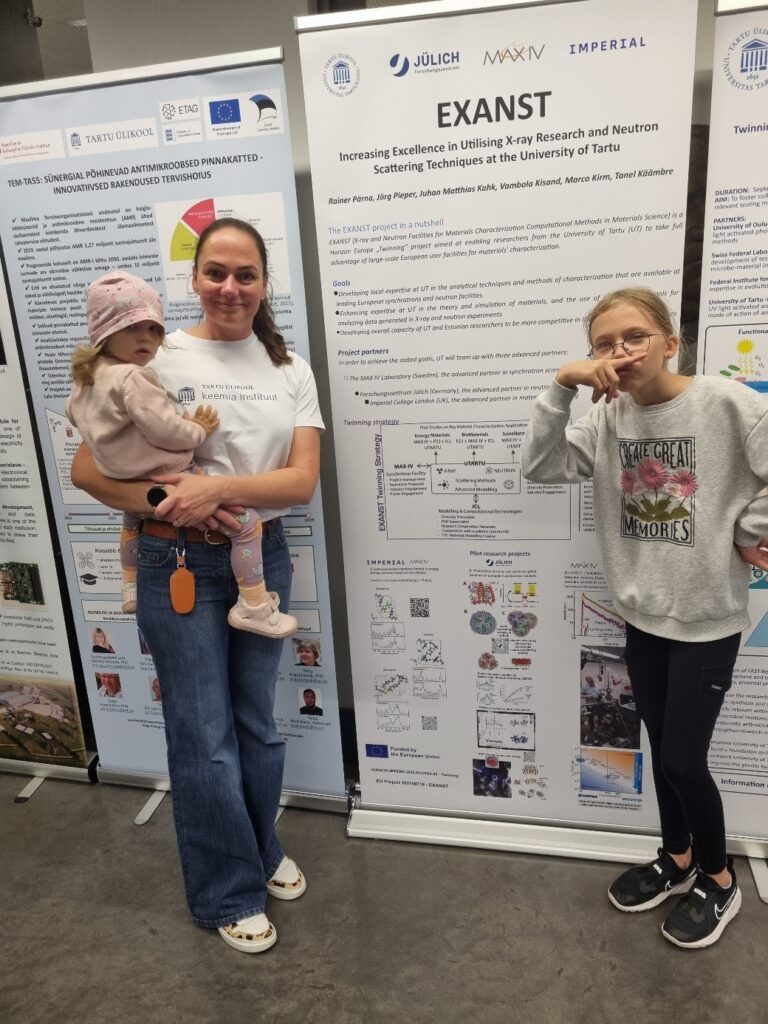
27. September 2024: Kick-off meeting of the EXANST project
A kick-off meeting of EXANST was hold on 27.09.2024 as ZOOM event. All project participants were present, and EC was represented by an Project Officer. The main goals were discussed together with the project plan and tasks were assigned between partner
2. September 2024: Official start of EXANST project
As part of the twinning project EXANST, UTARTU and the advanced partners will jointly carry out three pilot research projects concerned with (i) solid-electrolyte-interfaces formed in energy storage devices based on ionic liquids, (ii) photoactive proteins that can serve as optical switches or tuneable fluorescence markers, and (iii) scintillator materials for radiation detection devices. The pilot projects will give researchers from UTARTU an opportunity to gain first-hand experience in specific X-ray and neutron methods and modelling techniques.


